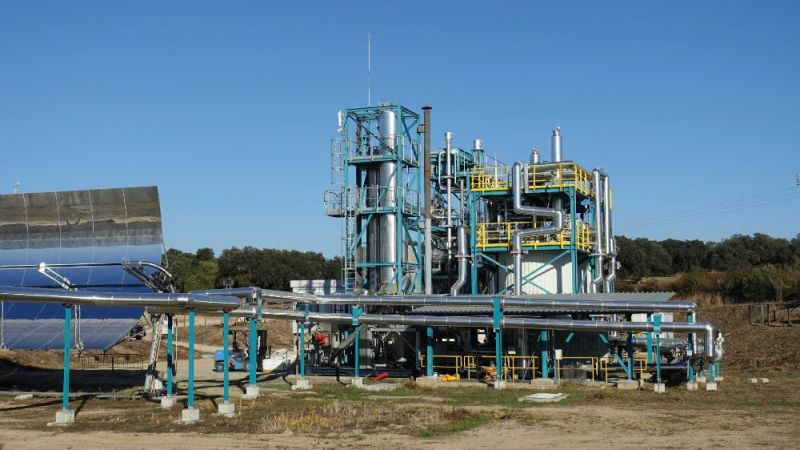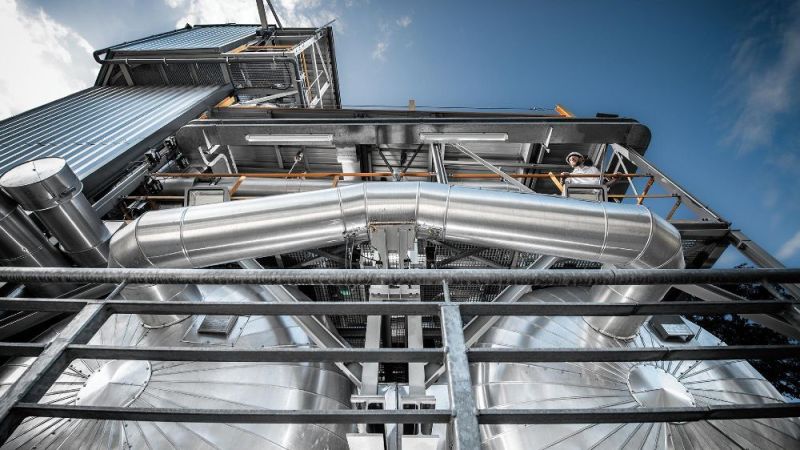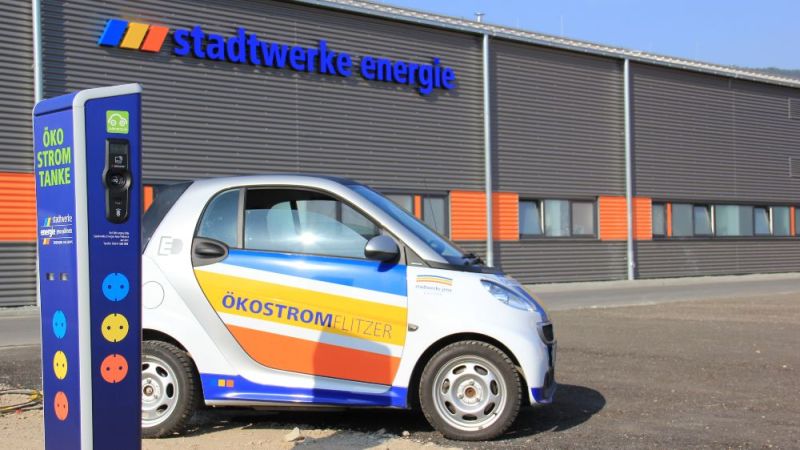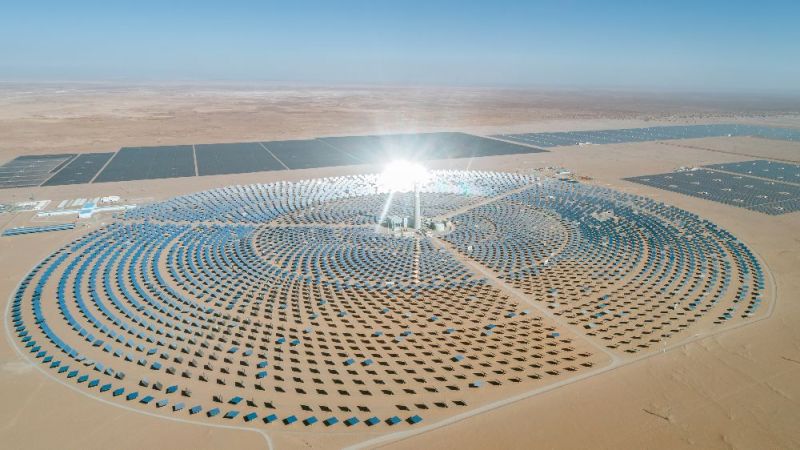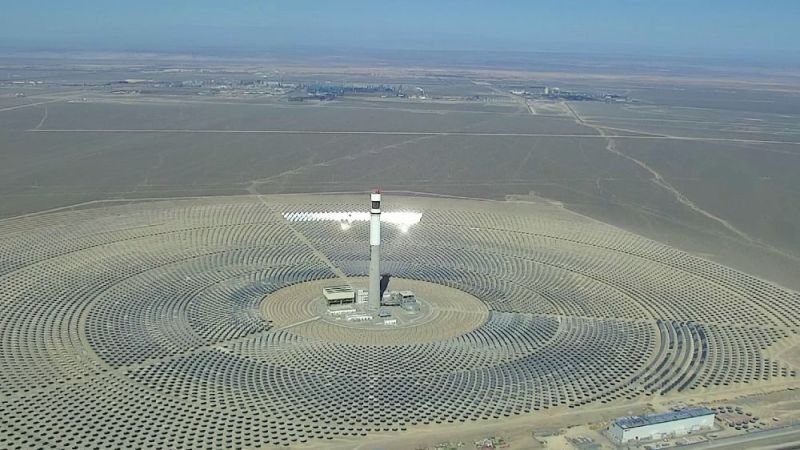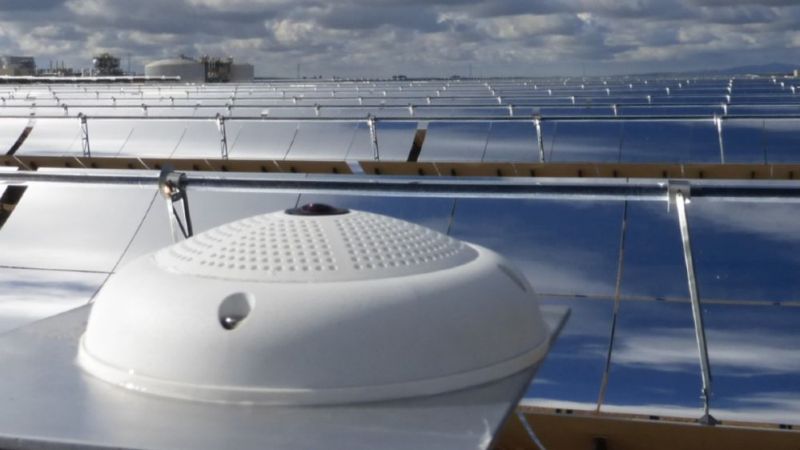Solar thermal power plants
Liquid salt storage for high temperatures increases efficiency
Scientists are researching liquid salt storage tanks for solar thermal power plants that are suitable for temperatures between 560 and 620 degrees Celsius. This allows more generated heat to be stored and increases the overall efficiency of the power plant.
In sunny regions, solar thermal power plants have for some years mainly used liquid salt, so-called nitrate salt melts, to temporarily store excess heat at around 560 degrees Celsius in large tanks. If the temperature of the storage tank could be raised further, the efficiency of the power plant could be increased even more. However, more research is still needed in this area. The problem: At temperatures above 560 degrees Celsius, chemical reactions take place between the liquid nitrate salt melt and the surrounding gas atmosphere. Toxic nitrogen oxides are formed that can escape from the storage system into the environment. In addition, decomposition products such as nitrite and oxide species (oxygen radicals) are formed in the salt. These can increase corrosion on components of the storage tank.
The aim of the VeNiTe project is therefore to identify a gas system with precisely adjustable partial pressures for oxygen and nitrogen oxides and to exclude unfavourable other gases. This would significantly reduce corrosion on the storage system and increase the lifetime and operating temperature of solar thermal power plants. All factors that would significantly increase the efficiency for electricity generation and reduce costs. This approach would allow nitrate salt melts to be used permanently at temperatures of up to 620 degrees Celsius. The results are particularly relevant for solar thermal tower power plants, as higher temperatures are achieved here.
The scientists have already been able to demonstrate the influence of various gases such as oxygen and nitrogen oxides on the stability of the molten salt in laboratory tests. Now they are demonstrating the new gas system first on a laboratory scale up to 100 grams of salt mass and later on a practical scale with 100 kilograms. They plan to then prepare the technology for use in a power plant.
Corrosion-resistant materials increase the lifetime
A large-scale corrosion study is identifying materials that can withstand the conditions of molten salts at temperatures between 560 and 620 degrees Celsius. Here, the scientists are investigating various metal alloys for their corrosion resistance. In the process, they identify both the most promising steels and the complex ageing mechanisms between the steels.
It is true that the intensity of the sun in Germany is not sufficient for solar thermal power plants. However, the technology has export potential and can also be used in our own latitudes, for example in thermal storage power plants and to store process heat in industrial companies. (min)



